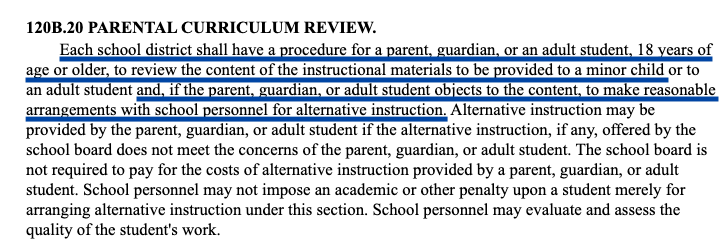Minnesota ranks close to bottom for education freedom
Minnesota has slid down to #45 for its overall education freedom ranking, according to the second edition of the Education Freedom Report Card published by The Heritage Foundation. (Florida, for the second year in a row, took first place overall.)
Ranked on education choice, teacher freedom, transparency, and return on investment, Minnesota declined in every category, most notably a seven-spot drop in education choice.
According to the Report Card’s breakdowns, Minnesota ranks #45 overall, #45 for education choice, #45 for teacher freedom, #38 for return on investment for education spending, and #29 on transparency.
Education Freedom State Rankings

Education Choice Rank: #45
As numerous states across the country introduced and expanded education freedom this year, Minnesota did not. The state’s rank for education choice dropped seven spots from 2022. While Minnesota was the first state to pass a charter school law, and does have open enrollment policies, there’s definite room for improvement. For example, Minnesota does not have mandatory within-district (also called intra-district) open enrollment policies.
Minnesota also does not have a school choice policy that allows families to use their child’s designated state education dollars at a nonpublic learning environment, such as an education savings account (ESA) policy. Such legislation has been introduced during the past several legislative sessions, but Gov. Tim Walz and DFL legislators have not been supportive.
Teacher Freedom Rank: #45
“Although the Land of 10,000 Lakes does not use Common Core-aligned tests, just 6 percent of teachers in Minnesota found their way to the classroom through alternative certification routes,” notes The Heritage Foundation, “and the state does not allow full reciprocity of teacher licensure.”
During this last legislative session, the counterintuitive decision to eliminate pathways to a Tier 2 license for aspiring educators passed. Eliminating these pathways will make it harder for future non-traditional and career-changing educators to enter the teaching profession.
Return on Investment Rank: #38
Minnesota spends the 18th-most per pupil among states at $16,401 in cost-of-living-adjusted terms annually, according to The Heritage Foundation. Student performance on the National Assessment of Educational Progress (NAEP) has reached 30-year lows, and now the majority of Minnesota students aren’t meeting math or reading benchmarks. “The Land of 10,000 Lakes employs 0.84 teachers for every non-teacher in its public schools,” according to The Heritage Foundation. As I wrote here, Minnesota principal growth was nearly 10 times greater than teacher growth between 2000 and 2019.
With pensions, “Minnesota’s unfunded teacher pension liability represents 4.3 percent of its state GDP,” according to The Heritage Foundation. “Minnesota can improve its ROI ranking by limiting growth in per-pupil spending, improving academic outcomes on the NAEP, and stopping growth in non-teaching staff while also lowering its unfunded teacher pension liabilities.”
Transparency Rank: #29
Minnesota state law does have a general provision for academic transparency. Under Statute 120B.20 “Parental Curriculum Review,” each school district must have a procedure in place for parents to review the content of the instructional materials to be provided to their children and, if they object to the content, they can work with school personnel for alternative instruction.

In addition, Minnesota Statute 120B.11 requires school districts to provide for regular community review of the curriculum review process. While this requirement is more broad, it is still a way to ensure parents are involved in overseeing a district’s review and evaluation cycle for each subject area. Minnesota has not adopted a parent bill of rights.
__________________________________
Please join American Experiment, Opportunity for All Kids, and the Minnesota Parents Alliance on Wednesday, November 15 in Golden Valley to learn more about Minnesota K-12 education and what the path forward must include. Attendees will leave with a greater understanding of the state’s K-12 system, ways they can get involved to restore excellence, and helpful resources to navigate the changing education landscape.